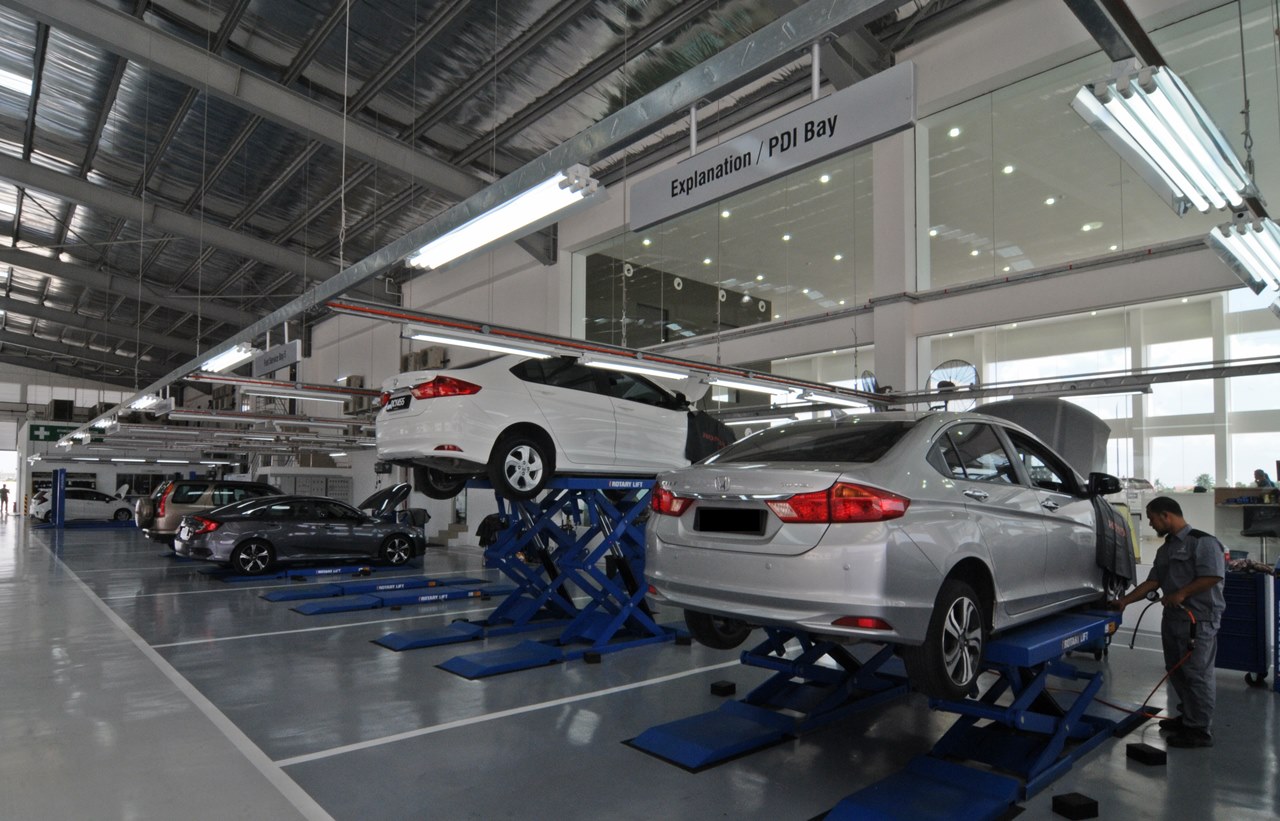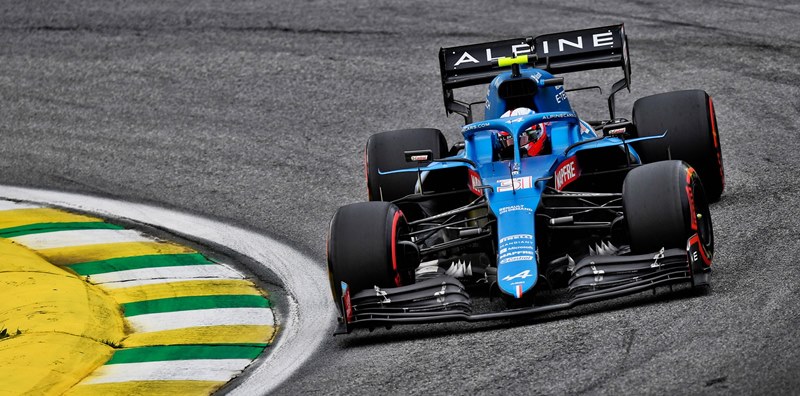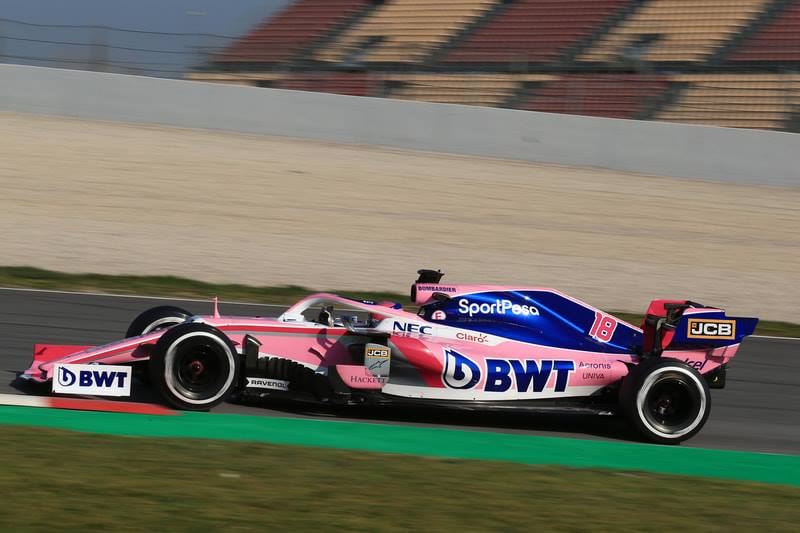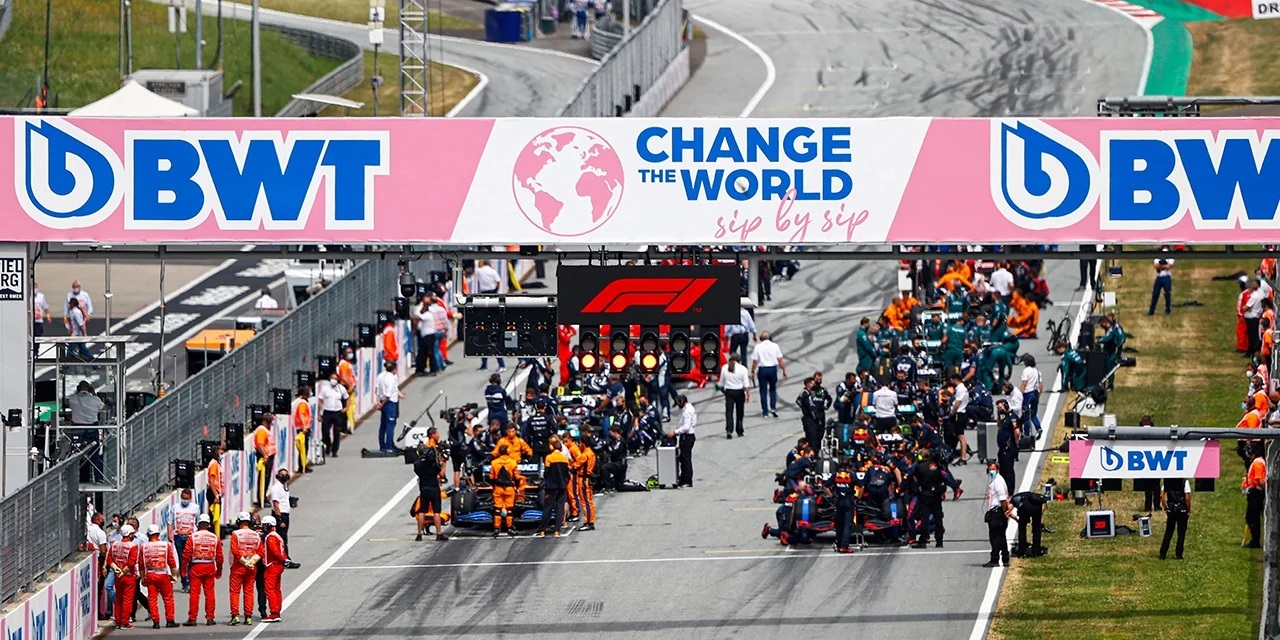The current Toyota Camry was introduced in 2018 in Malaysia and in the normal course of a model cycle, it would be around now that some freshening takes place. Typically, this involves cosmetic changes and perhaps the addition of an extra feature or two so that the model remains competitive against newer rivals with the latest features.
Rarely would you find the model getting a new engine and in fact, powertrains used to be maintained for at least a decade because it cost so much to develop them. But these days, the market is more competitive and so changes have to be more frequent than before.
Dynamic Force engine
That’s the case with the latest Toyota Camry 2.5V which gets a brand new engine. It’s from the Dynamic Force family which is a new range of engines that use high-speed combustion technologies to achieve what is claimed to be world-leading thermal efficiency for production engines. With the significantly reduced energy losses, the 4-cylinder engine produces 209 ps/253 Nm, which represent increases of 25 ps (+13.6%) and 18 Nm (7.6%), compared to the previous engine which had the same displacement.
With the new engine, the development team also took the opportunity to upgrade the transmission, replacing the 6-speeder with a more advanced Direct Shift 8-AT automatic transmission. This makes the Camry the only model in its class (locally) to offer an 8-speed automatic transmission. Though having more gear ratios, the transmission is lighter and more compact, and operates with greater efficiency too.
The Dynamic Force engine was developed together with the Toyota New Global Architecture, or TNGA in short, which is a lightweight, high-performance platform used for this generation. Having developed the engine together with the TNGA has provided better optimization with the engineers having greater flexibility to enhance not just fundamental vehicle performance but also styling.
More intelligent safety systems
The other area which has received upgrading is the Toyota Safety Sense (TSS) system. This integrates 5 active safety systems which use a camera and radar. The two sensors scan the road ahead to identify other vehicles as well as recognize lane markings. The information and imagery is then constantly analyzed and if an accident is predicted, the driver will be warned. If no corrective action is taken, then the computer will take its own action, like activating the brakes.
For the new Camry 2.5V, the camera has increased recognition capabilities and can also detect pedestrians and cyclists during the day as well as at night when lighting conditions are low.
TSS includes a lane-keeping capability and this is useful on long journeys. By keeping the car within its lane, the driver will be less fatigued as steering effort is reduced. More importantly, it can warn the driver when he or she loses concentration and the car starts to move out of its lane. Again, if corrective action is not taken, the system will make steering corrections to guide the car back safely.
Dynamic Radar Cruise Control is part of TSS but earlier, it had limitations in speed. With the new Camry, the system has been upgraded to be active at all speeds. This means that the car can even slow down to a stop if the vehicle in front stops, and then resume moving when the vehicle ahead moves. It can make driving in start/stop traffic less stressful and the only thing the driver has to do is steer because a safe gap will always be maintained.
The final sub-system of TSS is Adaptive High Beam which basically adjusts between high and low beams automatically. This is to provide illumination that is as strong as possible but switching to low beams when necessary to avoid blinding oncoming drivers. Incidentally, the headlights have new Bi-Beam LEDs which deliver even stronger lighting.
Besides TSS, the Camry also comes with other driver assistance systems such as a Panoramic View Monitor, Rear Cross Traffic Auto Brake (RCTAB), Blind Spot Monitor, and Intelligent Clearance Sonar (ICS).
While the Rear Cross Traffic Alert was available in the previous model, the system in the latest Camry has been improved with the addition of an automatic braking capability (RCTAB). Besides just alerting the driver of a vehicle approaching from the left or right as the car is being reversed out of a bay, the system will also brake the car if the driver does not stop. This can prevent an accident or reduce the severity if it does occur.
Newly added, ICS is an advancement over having just sensors at the front and rear bumpers to detect obstacles or walls when parking. It is ‘intelligent’ as it will determine if there is a risk of the car hitting an obstacle like a wall or post and if so, the brakes will be applied to stop the movement of the car. This will help prevent damage to the car’s bodywork.
More scope for cabin packaging
With the adoption of TNGA, the 8th generation Camry could be completely redesigned with a wider scope than ever before. This allowed for a completely new interior layout combining functionality, advanced styling and a high degree of personal craftsmanship. The layout has a strong focus on the driver’s area and to improve viewing for the driver, the centre display screen position has been set higher, located above the centre air vents.
Besides the Optitron meters, the driver can also refer to the Head-up Display (HUD) projected on the windscreen ahead of the steering wheel. Information shown is the road speed, gear position, Driving Support System (directions, ACC display, LDA Display, Parking Sensor), audio details and TSS warning alerts. The HUD, adapted from aircraft displays, allows the driver to keep his or her eyes on the road ahead for better driving safety.
New futuristic grey ornamentation has been added to provide an elegant and neat impression. Based on a composite pattern with straight lines and overlapping an organic base pattern, the ornamentation evokes an expansive and layered feel that creates an elegant ambience.
Given the popularity of the Camry as an executive sedan, much attention has also been given to the comfort for the rear passengers. New for 2022 are power adjustment for the rear seats with the outer seats able to recline by 8 degrees for a more comfortable seating position. There are also larger headrests fitted for enhanced comfort. Adjustments for the seat as well as the rear air-conditioning, sun-shade and audio system can be conveniently done on the control panel within the centre armrest – something which you would find in much more expensive luxury models.
Also new for 2022 is the Tri-zone Automatic Climate Control system which allows the driver, front passenger and rear passengers to independently set their own temperature. This system is comparable to those in luxury models, and provides better individual comfort for every occupant.
ON THE ROAD
In earlier years, the Camry was seen as an ‘uncle’s car’, the sort driven by older people who might not care about driving dynamics and performance. But with this generation and its more aggressive, bolder looks, it’s hard to think of it that way. Of course, looks can only go so far and if it’s all looks and no go, then it’s still an ‘uncle’s car’.
The previous 2.5-litre engine gave fairly decent performance and provided smooth propulsion from A to B. With the new powertrain, there is even less noise emanating from the front, and refinement has been raised a notch or two. Power delivery is very linear, a bit slow initially but becoming more muscular as the revs rise. Overtaking can be done confidently as the midrange torque is notably strong.
Toyota’s transmissions have always been smooth and the Direct Shift – 8AT has nearly imperceptible gearshifts. You can, at the press of a button, alter the character to be more sporty but unless pushed hard, you won’t feel a big difference. There are also paddle shifters but it is likely that the ‘intelligence’ of the transmission will make it less necessary to intervene with manual selection of gears.
TNGA is certainly an excellent piece of engineering work, allowing the car to have the comfort levels expected of an executive sedan as well without sacrificing dynamic handling. Thanks to the lower centre of gravity and responsive steering, the car is easy to maneuver, and its agility belies its size (and weight).
The space in the cabin deserves mention and whether you sit in front or behind, there’s generous space all round. We have Toyota USA to thank for this: had they not rejected the original design in 1990, we might still have a conservative narrow-bodied sedan which had been proposed. By insisting on something bigger to suit Americans in particular, we got a car that is today bordering on being a luxury model.
Just as nobody ever got fired for choosing IBM in the old days (because IBM computers were so good and so was their service support), you can’t really go wrong with a Camry… or any Toyota for that matter. The notion that Toyotas are boring cars is also an outdated one and with the new Dynamic Force powertrain, you can have an enjoyable spirited drive while the comfort levels will also please the people sitting behind.
UMW Toyota Motor starts 2022 with almost double the sales volume compared to January 2021
Exclusivity is always desired, especially in the upper end of the car market and this was evident last year when Auto Bavaria offered a limited edition of BMW X5 xDrive 45e with M Performance Parts. Only 30 units were available, assembled at the BMW facility within the Inokom plant in Kedah, and all found owners within a week.
Only 22 units available this time
The response to that limited edition encouraged Auto Bavaria to place an order for a second batch but this time, only 22 units are available. “We are now able to once again offer our esteem customers a second opportunity to own this extremely premium vehicle. Auto Bavaria brand has become synonymous with top-notch quality for both sales and service, which is why we are the preferred BMW dealership,” said Vi Thim Juan, Managing Director of Auto Bavaria.
Each Sport Activity Vehicle (SAV), priced from RM480,000 (excluding insurance) comes with M Performance parts which not only give sportier looks but actually improve aerodynamics.
Specifically, the parts (which are worth RM36,500) are a gloss black front grille, carbonfibre housings for the door mirrors and Star Spoke 748M 20-inch light alloy wheels. Each tyre is linked to the Tyre Pressure monitoring system which will alert the driver if the pressure is abnormal.
Complimentary gifts worth RM22,000
This time round, those who buy the X5 also get complimentary gifts worth RM22,000. These are a luxury suitcase, BMW umbrella, BMW Leather Care Set with UV protection, BMW Brake Pad & Brake Disc Voucher, and STTOKE Classic Insulated Ceramic Reusable Cup.
Bestselling SAV of the range
The X5 is the bestselling model of BMW’s SAV range worldwide. It was the company’s first SAV and the current generation is the fourth one since 1999. Powering the X5 xDrive45e M Sport is a 3-litre 6-cylinder engine with BMW eDrive technology. With a combined maximum output of 394 bhp/600 Nm, the SAV is claimed to have a top speed of 235 km/h and a 0 to 100 km/h capability of 5.6 seconds.
Running with just the electric motor, the claimed range can be up to 77 kms on a fully charged lithium-ion battery pack, with a maximum speed of 135 km/h. With the hybrid powertrain optimizing fuel efficiency, the fuel consumption is said to be up to 40 kms/litre.
All X5s have all-wheel drive which is provided by BMW’s proven xDrive system. Power delivery first goes through an 8-speed Steptronic transmission with enhanced shift dynamics and then to all four wheels with torque distribution according to grip and surface conditions.
If you missed the opportunity to get on last May, you now have a second chance but you should hurry to an Auto Bavaria showroom quickly.
Buying a used vehicle is sometimes risky as the mechanical condition may not be fully known since someone else used it before. If unlucky, the vehicle may have problems and the new owner may have to spend extra money to fix the problems. In the worst case, the vehicle could be a nightmare to own as it may keep having problems.
Now, for those who want to buy pre-owned Honda vehicles, Honda Malaysia can give more peace of mind as it is introducing Honda Certified Used Car (HCUC). This is an additional and trustworthy business channel that will offer verified, pre-owned Honda vehicles.
6 HCUC outlets
HCUC is starting off at 6 dealerships located in different regions. The dealerships are MJN Motors Sdn. Bhd. (Selangor), Tiong Nam Motor (M) Sdn. Bhd. (Selangor), Kah Motor Co. Sdn. Bhd. (Penang), Kah Motor Co. Sdn. Bhd. (Johor), Yong Ming Motor Sdn. Bhd. (Johor) and Chuan Thye Motor Sdn. Bhd. (Pahang). As demand grows, Honda Malaysia will gradually expand the number of HCUC outlets around the country.
“Honda Malaysia is committed to offering products and services of the highest quality and ensuring that all our cars, be it new or pre-owned, provide a feeling of joy to the car owners. As such, we have rolled out HCUC as an additional option for customers to own their preferred Honda cars and enjoy being a Honda owner,” said Honda Malaysia’s Managing Director & CEO, Madoka Chujo.
Not more than 5 years old
Through HCUC, customers can choose different models of Honda pre-owned cars. All the Honda pre-owned cars will be no more than 5 years old, with no more than 100,000 kms of usage. Honda Malaysia ensures that the cars sold by HCUC have undergone a thorough and stringent 288-point inspection conducted by Honda Certified Inspectors.
This inspection covers the condition of the engine and transmission, functionality and undercarriage as well as the exterior and interior conditions. This will enable customers to drive the vehicles with peace of mind knowing that they are certified to be in good condition, equipped with genuine parts and free from major accidents and flood damage.
For the convenience of customers, the registration and transfer process will be done by the HCUC dealers.

Extended warranty provided
Additionally, vehicles purchased from HCUC will have an additional one-year extended warranty on top of the existing warranty that is still valid (terms and conditions apply). Needless to say, once they are owners of the vehicles, they can enjoy the same high standards of aftersales support from all authorised Honda dealerships.
In addition, customers will have access to the Honda network of authorised dealerships nationwide such as sending their certified pre-owned cars to any Honda dealerships for after-sales services.
For more information on the location of HCUC dealerships, visit www.honda.com.my or call Honda Malaysia’s Toll-Free number at 1-800-88-2020.
Honda Malaysia aims to sell 80,000 units in 2022 and introduce Certified Used Car business
With BWT (a supplier of water treatment systems) partnering with the Alpine F1 team, the new 2022 racing cars have taken on ‘flipped’ livery with pink becoming the most prominent colour. This unique livery, which highlights the partnership with BWT, will be used for the first two races of the season while the historic blue of the Alpine brand will be maintained.
Second F1 car by Alpine
The BWT Alpine F1 Team’s new car is known as the A522 which is its second F1 car. It has been under development over the past 18 months to meet the significant regulation changes introduced for the 2022 season.
Besides a completely new chassis and car build, the A522 also has an all-new RE22 power unit. The engine specification and packaging has allowed the team some extra freedom in shaping the rest of the car to better exploit the latest technical regulations and adjust for the new E10 fuel specification, E10 which is the next step to sustainable fuels in the sport.

The team will again have the services of Fernando Alonso and Esteban Ocon, who were ranked 10th and 11th in the Drivers Championship last year. Ocon enters his third consecutive year powered by a Renault engine, while Alonso embarks on a historic and potentially record-breaking 20th season in F1. The 40-year old Spaniard has been World Champion twice (2005 and 2006) and was the youngest world champion, and then youngest 2-time champion in the sport’s history at the time.

About BWT
BWT (Best Water Technology) is Europe’s market leader in water treatment, with the mission to provide water of perfect quality for all purposes, everywhere in the world, directly from the tap, the water dispenser, or the table water filter. Its pink colour symbolizes the company’s mission to ‘Change the World – sip by sip’ and to make it a little bit better every day by implementing the Bottle Free Zone concept. In this respect, BWT will also be deepening its partnership with Formula 1 over the next few years. A multi-year partnership is part of the joint commitment against the use of single-use plastic and for sustainable positive change.


“We plan to make the Paddock free of single-use plastic bottles by 2025. To achieve this goal, BWT is providing water stations throughout the Paddock and the Paddock Club where drivers, crew and fans alike can enjoy fresh local water mineralized with magnesium, zinc, and silica in reusable bottles,” a statement from BWT said.
‘T’ normally comes after ‘S’ but in the case of the new Porsche Macan T, it is positioned between the Macan and Macan S. Rather than being a sequential designator, the ‘T’ refers to ‘Touring’ and until now, only the 911 and 718 have ever had ‘T’ version. It’s a designation that goes back to 1968 when a special version of the 911 had a more dynamic set-up and reduced weight.
In 2022, the Macan T is conceived with the same concept and is the first 4-door sportscar from the company with the designation. It’s also the only Porsche model to feature steel suspension with Porsche Active Suspension Management (PASM) as standard, combined with the body being lowered by 15 mm.
Further optimisation of chassis
The anti-roll bars on the front axle are more rigid and the car’s chassis tuning has been optimised to provide very responsive steering behaviour and agile handling. The Porsche Traction Management (PTM) has also been adapted to a more demanding driving style and has been specially designed with a rear-wheel bias.
Adding adaptive air suspension with PASM and lowering the body is also an option – a new feature for Macan models with 4-cylinder engines. Porsche Torque Vectoring Plus (PTV Plus) can also be added and the system has been adapted to the dynamic characteristics of the T model and further sharpens the driving dynamics.
2-litre, 4-cylinder turbo engine
With the 2-litre 4-cylinder turbocharged engine (which you will also find in the latest VW Golf GTI), weight has been taken away and with 58.8 kgs less of it on the front axle, start-off performance and cornering ability are enhanced.
The lightweight engine has an output of 265 ps and a broad spread of 400 Nm of torque which flows through a fast-switching 7-speed dual clutch transmission (PDK) and the Porsche Traction Management (PTM) all-wheel drive system. When fitted with the standard Sport Chrono Package including the mode switch and Sport Response button on the steering wheel, the Macan T is said to be able to accelerate from 0 to 100 km/h in 6.2 seconds and reach a top speed of 232 km/h.
Differentiating colour scheme
Besides a range of 13 plain, metallic and special colours for the exterior, the Macan T is identifiable by design elements painted in Agate Grey Metallic on the front, flank and rear. The exclusive contrast colour can be seen on the painted front trim, exterior mirrors, side blades, roof spoiler and logos on the rear. Sports tailpipes and side window trims in Black (high gloss) are included as standard and the side blades feature the ‘Macan T’ logo in Black. The 20-inch Macan S wheels are finished exclusively in dark titanium.
The interior of the Macan T comes with standard, 8-way electrically adjustable heated sports seats upholstered with an exclusive Black leather package. The centres of the front seats and the outer rear seats are delivered with the Sport-Tex Stripe pattern and the front headrests each have an embossed Porsche crest. The contrasting colour from the exterior continues inside the vehicle in the form of decorative silver stitching on the seats, headrests and steering wheel.
Standard equipment also includes a multifunction GT heated sports steering wheel and the Sport Chrono stopwatch in the upper part of the dashboard. The door entry guards come in black aluminium as standard and feature a Macan T logo.
Pricing has not been announced but authorized Porsche showrooms in Malaysia are accepting pre-orders if you want to be among the first in the country to own this new version of the best-selling Porsche model line in 2021.
© Copyright – Piston.my 2024 Trademarks belong to their respective owners. All rights reserved